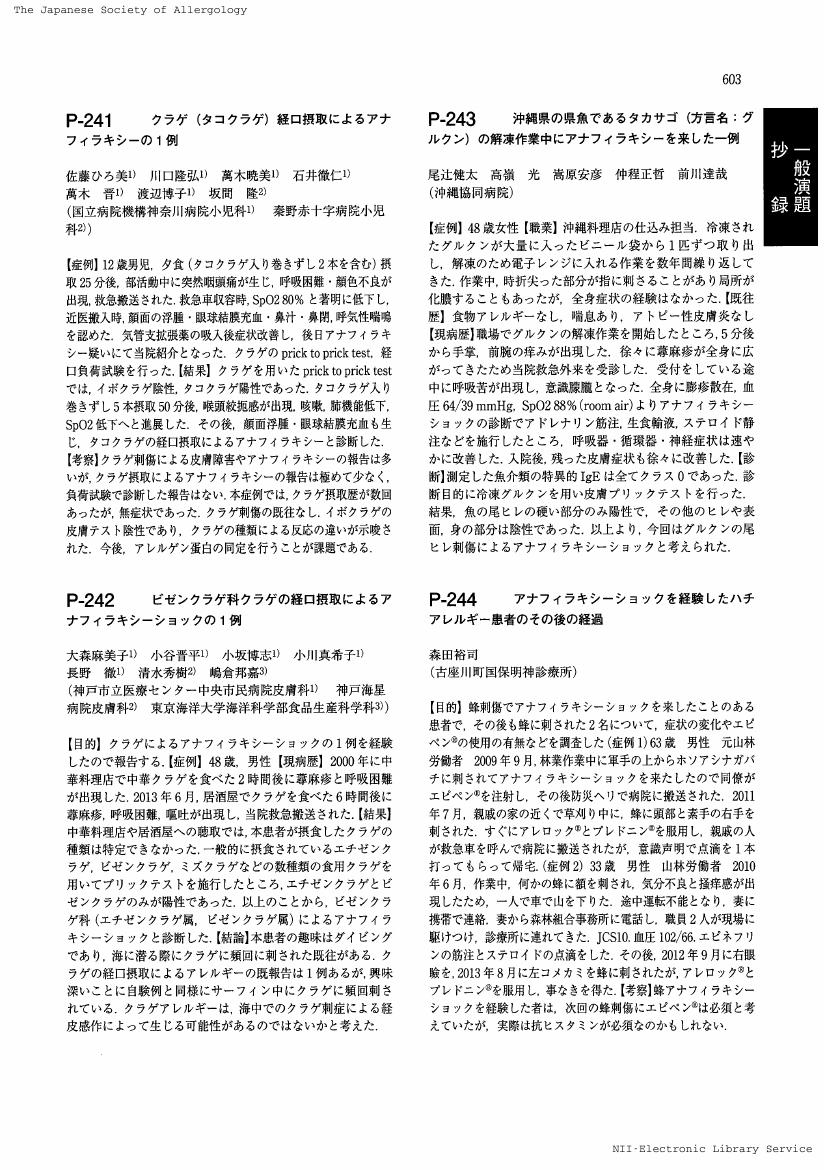2 0 0 0 OA 「学士力」を軸とする新たな「教育力」広報の構築 -同志社大学との比較分析を通じて
- 著者
- 佐藤 ひろ美 川口 隆弘 萬木 暁美 石井 徹仁 萬木 晋 渡辺 博子 坂間 隆
- 出版者
- 一般社団法人 日本アレルギー学会
- 雑誌
- アレルギー (ISSN:00214884)
- 巻号頁・発行日
- vol.63, no.3-4, pp.603, 2014-04-05 (Released:2017-02-10)
1 0 0 0 OA 吸収と共振に基づく波力発電の研究
- 著者
- 川口 隆
- 出版者
- 中央大学理工学部事務室
- 巻号頁・発行日
- 2019-03-24
【学位授与の要件】中央大学学位規則第4条第1項【論文審査委員主査】有川 太郎 (中央大学理工学部教授)【論文審査委員副査】山田 正(中央大学理工学部教授)、姫野 賢治(中央大学理工学部教授)、辻 知章(中央大学理工学部教授)、池谷 毅(東京海洋大学学術研究院教授)
1 0 0 0 OA 水熱実験法による水晶の育成
- 著者
- 川口 隆雄 鈴木 淑夫
- 出版者
- 一般社団法人 日本鉱物科学会
- 雑誌
- 鉱物学雜誌 (ISSN:04541146)
- 巻号頁・発行日
- vol.15, no.1, pp.18-35, 1981-03-31 (Released:2009-08-11)
- 参考文献数
- 18
1 0 0 0 OA 島根県浜田地震 (1872年) の地形学的検討
- 著者
- 藤森 孝俊 蒔苗 耕司 山口 勝 川口 隆 太田 陽子
- 出版者
- Tokyo Geographical Society
- 雑誌
- 地学雑誌 (ISSN:0022135X)
- 巻号頁・発行日
- vol.99, no.2, pp.166-181, 1990-04-25 (Released:2009-11-12)
- 参考文献数
- 18
- 被引用文献数
- 1
The 1872 Hamada earthquake (M=7.1±0.2) is one of the major historical earthquakes which accompanied a coseismic uplift and subsidence in the coastal area. This paper intends to examine an implication of the Hamada earthquake for geomorphological development of the Hamada area, based on the investigation of marine terraces, emerged sea level indicators such as sea caves, benches, fossil beds and beach deposits, and fault topography.Two steps of Pleistocene marine terraces are found in the coastal area. Terrace I, c. 40-60 m high, is underlain by weathered beach gravel covered by dune sand which is interbedded by at least four horizons of paleosol. It is considered, that a major interglacial period resulting in strong weathering of Terrace I deposits occurred after the formation of this terrace. Thus, Terrace I can be correlated to the penultimate interglacial, and Terrace II, c. 15-25 m high, underlain by rather fresh gravel bed, to the last interglacial. Accepting this correlation, the uplift rate of the study area must be small, c. 0.1-0.2 m/ka, and is no significant difference in the uplift rate over the study area. Height of emerged sea level indicators associated with the Hamada earthquake is 0.9-1.7 m above the present mean sea level. At least one sea level indicator higher than the emerged sea level at the time of the 1872 Hamada earthquake was found at several locations through the study area including the coast where coseismic subsidence occurred in 1872. Northeast-southwest trending lineaments predominate in the study area and a fault exposure is observed on one of the lineaments suggesting that they are fault origin. Areas of coseismic uplift and subsidence can be seens by turns along these faults.Characteristics of the 1872 Hamada earthquake are summarised as follows, based on the above mentioned geomorphological observation : 1) Coseismic deformation as associated with the Hamada earthquake has not accumulated through the late Quaternary, and this earthquake must be a very rare event with coastal deformation during the Holocene. 2) Distribution pattern of coseismic deformation, that is, the occurrence of small blocks with coseismic uplift and subsidence by turns can be interpreted as an effect of strike-slip movement on the faults.
1 0 0 0 OA 製紙スラッジ焼却灰を利用した低炭素コンクリートの性能評価
- 著者
- 木下 尚樹 氏家 勲 河合 慶有 川口 隆 安原 英明 長江 俊勝
- 出版者
- 一般社団法人 資源・素材学会
- 雑誌
- Journal of MMIJ (ISSN:18816118)
- 巻号頁・発行日
- vol.133, no.6, pp.132-139, 2017-06-01 (Released:2017-06-23)
- 参考文献数
- 13
- 被引用文献数
- 12
Industrial waste generated in the domestic paper industry in Japan was 5.1 million tons in 2015, and after reduction and recycling, 152 thousand tons of the waste was consequently disposed. Organic sludge (paper sludge), which occupies two-thirds of the industrial waste generated in the paper industry, is incinerated for the purpose of volume reduction and thermal recycling, and then it becomes paper sludge ash (PS ash). PS ash is recycled as aggregate, roadbed material in the civil engineering field and cement raw material, but it is necessary to further expand the application and reduce the final disposal amount. From the above background, in this research, the strength characteristics, the durability performance and the environmental impact of low carbon concrete produced by reducing cement usage to 45% by using PS ash as admixture in addition to fly ash and blast furnace slag fine powder, were investigated. Experimental results show that the low carbon concrete produced in this research has long term strength development, and that PS ash does not contribute to long term strength. Moreover, the clay mineral contained in the PS ash has an effect of reducing drying shrinkage by water retention and expansion. With respect to durability performance, neutralization is promoted by decreasing the total cement amount, while salt tolerance resistance is improved. Frost damage resistance tends to decrease. The elution amount of toxic substances is less than the soil environmental standard value.

